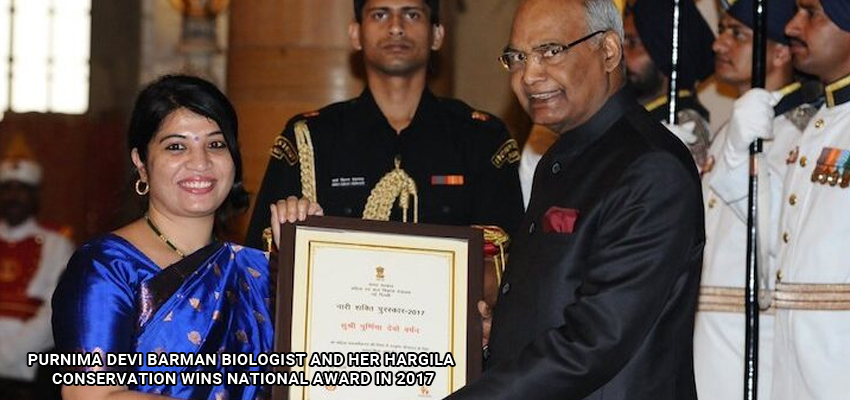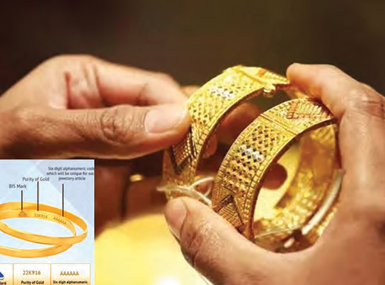
CORPORATE CITIZEN CLAPS FOR PURNIMA DEVI BARMAN, RECIPIENT OF THE CHAMPIONS OF THE EARTH AWARD, THE UN’S HIGHEST ENVIRONMENTAL HONOUR IN THE ‘ENTREPRENEURIAL VISION’ CATEGORY.
She is a senior project manager of the Avifauna Research and Conservation Division, Aaranyak. A wildlife biologist from Assam, Purnima Devi, has been championing the cause of the greater adjutant stork (Leptoptilos dubius), locally known as the Hargila or ‘bone swallower’ in Assamese, and is the 2nd rarest stork species worldwide. “Purnima Devi Barman’s pioneering conservation work has empowered thousands of women, creating entrepreneurs and improving livelihoods while bringing the greater adjutant stork back from the brink of extinction,” said Inger Andersen, the executive director of the United Nations Environment Programme (UNEP). In 2007, Purnima Devi began her mission to protect the stork and focused on the villages around Kamrup district, where the birds were most concentrated. She knew they needed protection as the carnivorous birds inhabit wetland ecosystems and clean the environment. They are also significant for nutrient cycling and ecosystem regulation. Currently, only 1,200 Hargilas are surviving worldwide as per a 2016 IUCN Red List update which classifies the bird as ‘endangered.’ Purnima Devi’s love for birds began at age five when she lived with her grandparents on the banks of the Brahmaputra. It built a greater passion, and after she completed her master’s degree in Zoology, she began her Ph.D. on the greater adjutant stork. She delayed her thesis by observing that the species were nearing extinction and aimed at keeping them alive. However, she had to change perceptions amongst the locals first as these birds are considered bad omens, bad luck, or disease carriers. She has gained support from 10,000+ village women who constitute the ‘Hargila Army’ in preserving the endangered stork population. Their primary tasks involve protecting nesting sites, treating injured storks that have fallen from their nests, and also arrange “baby showers” to celebrate the arrival of newborn chicks. The Hargila Army has helped communities plant 45,000 saplings near stork-nesting trees and wetland areas that support future stork populations. Purnima Devi has won several accolades, including the 2017 prestigious ‘Nari Shakti Puraskar’ and the equally acclaimed Whitley Award or the ‘Green Oscar.’
CORPORATE CITIZEN SLAPS THE INTENTIONS OF CORRUPT JEWELLERS, MOSTLY IN THE UNORGANISED SECTOR, WHO HAVE MANIPULATED THE LOGO STANDARDS SCHEME PRESCRIBED BY THE BUREAU OF INDIAN STANDARDS (BIS) TO SELL FAKE HALLMARKED GOLD.
 Fake counterfeit hall marked gold in circulation
Fake counterfeit hall marked gold in circulation by dishonest jewellers
Unscrupulous jewellers have been conspiring with a few hall markers in marking gold with the old logos prescribed by the BIS. The Indian gold hallmarking standards under BIS mark purity (cartage) and jewellers’ initials. However, corrupt jewellers have been passing off adulterated or sub-standard, and in some cases, smuggled gold as under old stock, with logos adhering to the old BIS standards and not the 2021 mandatory BIS guidance. It has increased consumers’ risk of buying fake hallmarked gold that has been flooding the market. The Hallmarking Federation of India (HFI) has currently alerted the misuse of the gold standards prescribed via a letter to the central government. “The implementation of the mandatory HUID (Hallmark Unique Identification) logo from June 2021 starting from 288 districts was a landmark event in consumer protection,” wrote the HFI. However, dishonest jewellers decided to buy more time in adhering to the new directives claiming unsold stock that was hallmarked under the old scheme, which was discretionary. “The old logo was not foolproof, unlike the HUID,” said James Jose, President of HFI. He clarified that “fake hallmarked” gold has been circulating along with the HUID gold in the Indian market. In June 2021, the ministry of consumer affairs introduced mandatory hallmarking through a unique, six-digit alpha-numeric code, or the unique hallmark identification (HUID), that guarantees the quality and quantity of gold purchased. Jose said there is an immediate need to fix a cut-off date by the government that should discontinue the sale of gold hallmarked under the old logos. “We need to take the momentum of mandatory hallmarking to the remaining 400 districts of the country,” said the HFI. The 2021 HUID scheme now faces the challenge of imposing strict adherence and control across the market, lest it takes the sheen off India as the world’s 2nd largest gold consumer.